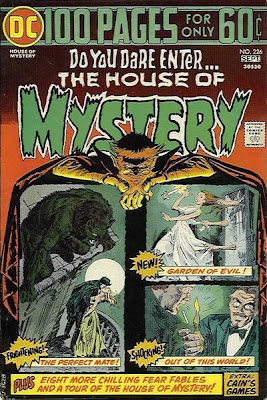
Download Midnight Tales #14
I have had a soft spot in my heart for Charlton comic books for years. I think it's due to my American-born penchant for rooting for the underdog, but thanks to Wayne Howard, Midnight Tales was not merely a magazine from a third-rate publisher, but also a groundbreaking comic book—and I didn't even know it at the time. Wikipedia says the following: "Wayne Wright Howard (March 29, 1949 – December 9, 2007) was best known for his 1970s work at Charlton Comics, where he became American comic books' first known cover-credited series creator, with the horror-anthology Midnight Tales blurbing 'Created by Wayne Howard' on each issue — 'a declaration perhaps unique in the industry at the time.'"
"Howard's most notable legacy is providing the precedent for comic-book 'created by' credits, which eventually became common years later beginning with DC's Vertigo imprint."
"Charlton writer-editor Cuti described Howard's credit for the horror anthology Midnight Tales being granted since 'it was his idea, his concept, his everything.' This ranged from the Andy Warhol-esque horror host Professor Coffin, The Midnight Philosopher, and his niece, Arachne — who in a twist on the horror-host convention would themselves star in a story each issue — to the notion of having each issue be themed: 'One time it would be blob monsters, and I wrote three stories about blob monsters, and another time it was vampires ... and that sort of thing.' Howard penciled and inked every cover and virtually every story, and occasionally scripted a tale. The three-issue reprint series Prof. Coffin #19-21 (Oct. 1985 - Feb. 1986) retains the 'created by' credit."
All that I knew was that having a comic book with three themed vignettes that tied things up cleverly on the last page was one of the most brilliant story-telling devices that I ever ran across. Professor Coffin was the smartest uncle in all of comicdom and Arachne was the prettiest girl, which was thanks to Wayne Howard's mentoring with artist Wally Wood, no doubt. Howard was never formulaic and Nicola Cuti always told the best damn rip-snortin' adventure stories around. I went on to purchase DC Comics' Spanner's Galaxy miniseries on the strength of Nick Cuti's name alone. I even became obsessed with tracking down all of the back issues of Midnight Tales and recall being very disappointed when the series was canceled after issue #18 was published, but I treasure each and every copy in my comic book collection to this day.
A mostly forgotten, unrecognized treasure, this is—if it ever was recognized at all.




















































